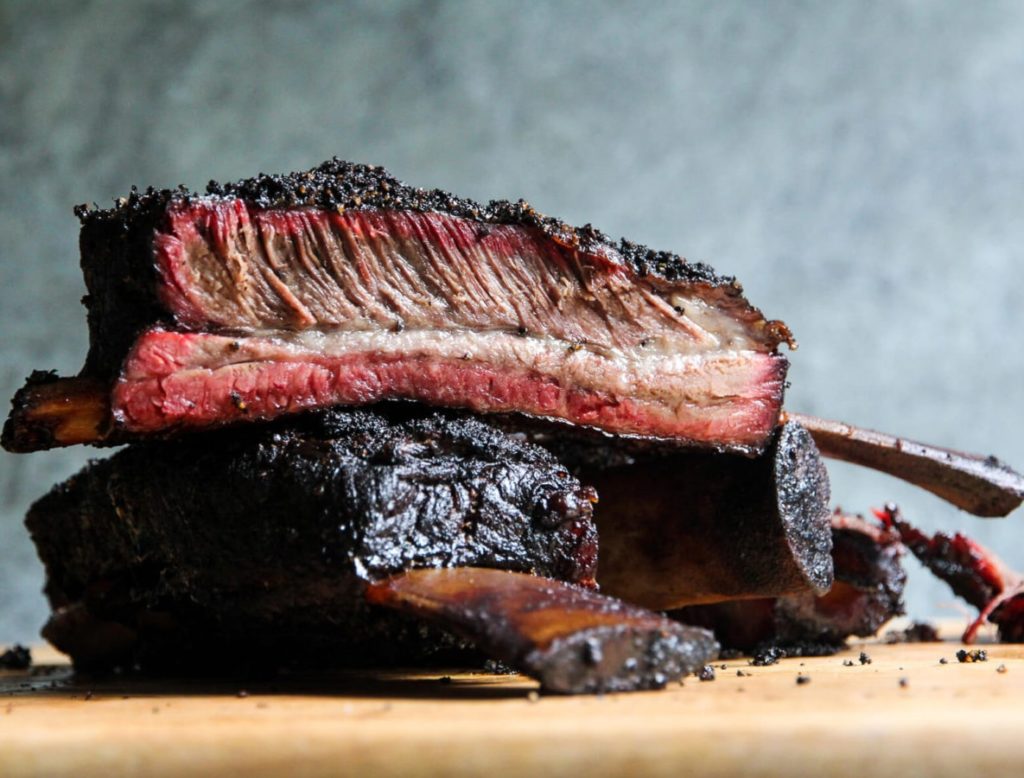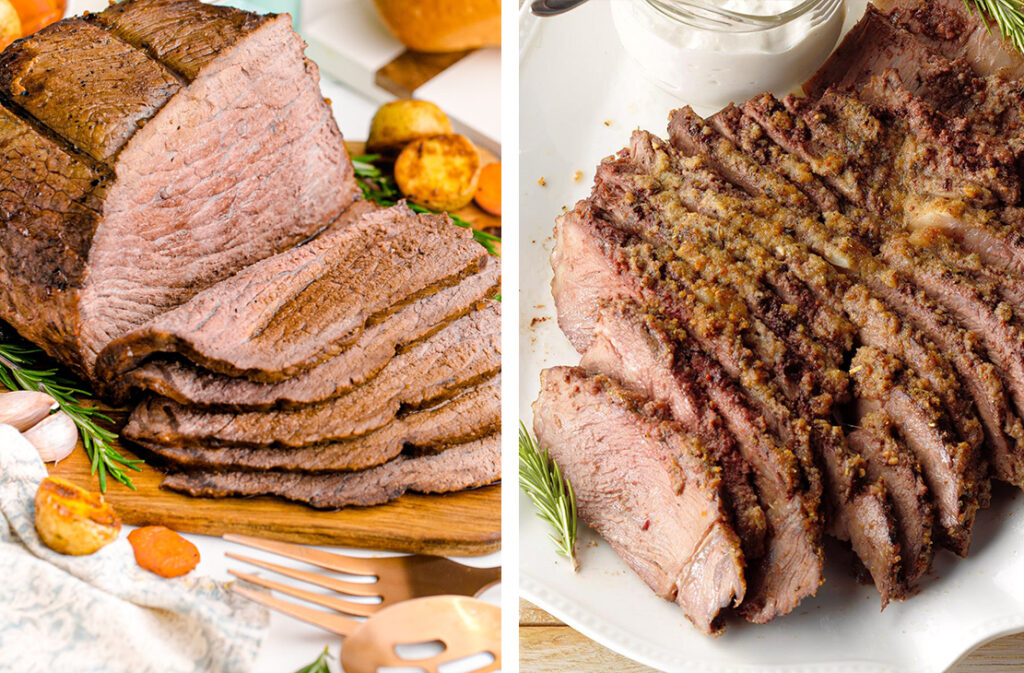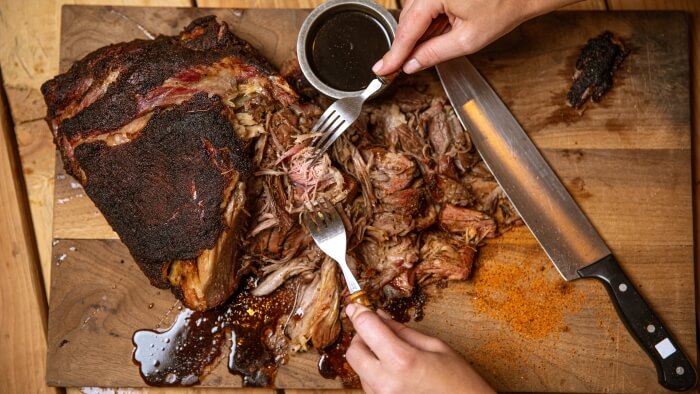

While there are many cuts of meat that are already very tender, there are some pieces of meat that could use a little bit of help. Knowing how to tenderize a steak is a very important piece of culinary information that can take your cooking from mediocre to out of this world. It is hard to imagine that the simple task of tenderizing your steak can change the way your food tastes, smells, and is presented, but this one act can truly make a huge difference in your steak. Learning how to properly tenderize your steak depending on the type of meat that it is and what it is being used for is vital kitchen know-how, so we are proud to offer this information today! In this article, we will explain different aspects of tenderizing meat, including what tenderizing is, why it is important, the best methods to tenderize meat, and how different meat tenderizing techniques work. By the end of this article, you will be ready to cook a delicious steak dinner that is plenty tender and delicious!
Tenderizing a steak or any type of meat is the process in which a tougher piece of meat is softened so that it is easier to chew and cut. Essentially, tenderizing meat or steak is making it more tender! When a steak is tenderized, the muscle fibers in the meat are broken down from long fibers into short fibers. This is what makes the meat tender. People like to tenderize their meat so that it is not as tough once it is cooked. Tougher cuts of meat can be very flavorful and go great in certain dishes, but it can be off-putting and annoying to have to saw with a steak knife through the meat or chew each bite 100 times. Tenderizing the meat can often improve digestion as well because the body does not have to break down as many tough protein fibers. In addition, tenderizing meat is not just for beef or steak. Other cuts of meat such as chicken or veal are often tenderized and pounded down very thin when made into chicken parmesan or other dishes like veal Milanese, chicken cordon bleu, or Argentine beef milanesas.
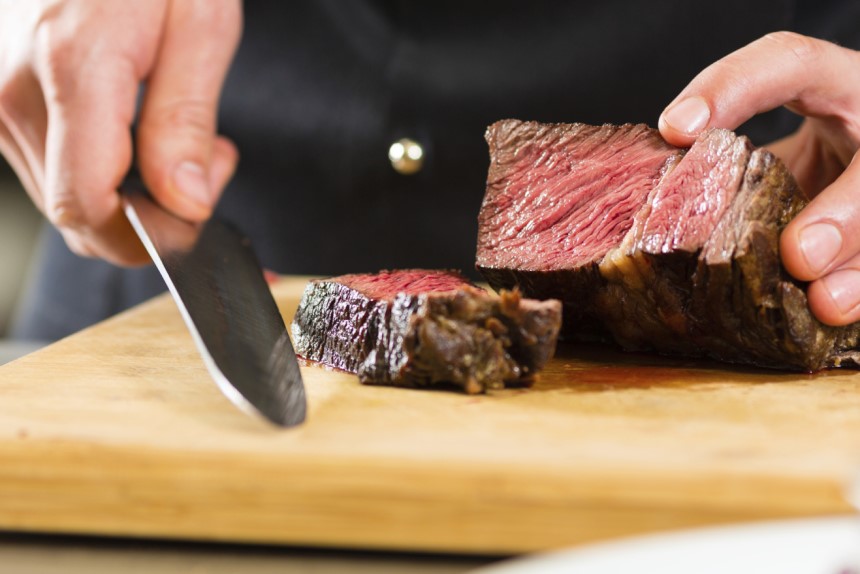
You must tenderize steak and other tough meat because of the way the meat fibers are connected. Tenderizing the meat creates small punctures within the connective tissue of the steak, which not only allows seasonings or sauces to penetrate the meat better but can help it become a more even surface while it cooks. Many steaks and other cuts of meat have areas that are thicker than others. These areas can make it harder to get an even sear or heat distribution over the entire piece of meat. That means that the thinner parts can get overcooked while the thicker pieces remain undercooked. Many people find that incredibly frustrating, so being able to flatten out the thicker chunks makes everything a bit easier, more enticing, as well as safer to eat because no part is severely undercooked.
Although you do not need to tenderize any type of meat before you eat it, it is recommended that you do it. Not only improve the absorption of marinades or seasonings and promote even cooking, but it also helps your digestive system. Our bodies are not always able to break down proteins the way we expect them to. The enzymes in our digestive system work very hard to break down protein, which can give us indigestion Trusted Source How Meat Can Trigger Acid Reflux Article - dummies Part of why meat is troublesome for people with reflux is that it’s hard to grind down to chyme. Because meat is so difficult to digest, it stays in the stomach longer than many other foods. This means the stomach will be expanded for a longer period of time, putting pressure on the lower esophageal sphincter (LES) for a longer period of time. www.dummies.com at times. It is always important to eat meat, especially steak, safely.
You can help your digestive system by tenderizing meat before you eat it. As we discussed earlier, tenderizing steaks, and other meat, breaks down the muscle fibers and connective tissue, which makes the fibers shorter. The shorter fibers are much easier to chew, cut with a knife, and digest. Plus, the texture is much softer and more delightful to eat!
Now that we understand what tenderizing a steak means and why it is so important, we must launch into the variety of ways you can tenderize steak. There are many different ways to tenderize meat. Some are easier than others, some require a bit of strength, and others are very hands-off, but they all serve a very similar purpose. In the sections below, we will discuss some of the most popular ways to tenderize meat. While all of these are useful and will work, you might not be able to use the one you want, depending on the meal that you are planning to cook. For example, marinating a piece of meat to tenderize it when you want to use a dry rub for seasoning and not a marinade might not be the best option for you. Make sure that you take into account what you need the meat to look like as well. This is because different tenderizing techniques yield different physical results. For example, marinating a steak to tenderize it will not yield the same results as pounding it. A marinade will break down the fibers and make the steak softer, while pounding will make the meat thinner as well as soft.
Wet brining is a popular method of tenderizing meat that provides tenderizing and flavor to the steak. Although it sounds similar to marinating, it is very different and provides a different result. Wet brining should also not be confused with dry brining (also known as salting,) which is a different form of tenderizing steak and other meats. Wet brining tenderizes steak and gives it flavor through a salt and water solution. The meat is submerged in the salt and water solution before it is cooked, where the salt can tenderize the meat as well as inject it with plenty of flavors. The most popular ratio of salt to water for a wet brine-tenderized steak is 1 cup of salt for one gallon of water. You can also add whatever number of other spices to the brine to help infuse other flavors into the steak. Many people add whole spices, garlic, and liquid seasonings like hot sauce or soy sauce, or even juice.
Wet brining takes a bit of time, so be prepared to wait a few hours until the wet brine has tenderized and flavored the meat appropriately.
Marinating a steak is a great way to infuse the meat with plenty of flavors as well as tenderize it. Marinating does take a little bit more time compared to other methods such as pounding, but they provide much more flavor. A marinade is a mixture of an acidic liquid along with seasonings and herbs that a steak or another cut of meat is soaked in for several hours. There must be some sort of acidic liquid Trusted Source Fruit enzymes tenderise meat — Science Learning Hub Acidic ingredients in marinades like vinegar, wine and lemon juice will tenderize meat by denaturing or unwinding the long protein in the muscle. In fact, if you leave an acidic marinade on a piece of meat for a long time, it will eventually break down all the proteins – leaving behind a mushy mess. www.sciencelearn.org.nz in the marinade to help break down the protein fibers in the steak. Without an acidic liquid, the protein fibers cannot break down, and the state will not be tenderized the way you expect it to be. Some of the common acidic liquids used in marinades are lemon juice, vinegar, lime juice, yogurt, buttermilk, orange juice, and soy sauce.

The next form of tenderizing steak is called braising. Braising is a meat tenderizing method that is designed to use on fattier, collagen-rich pieces of meat. These cuts of meat include fatty steaks with marbled meat, lamb shanks, beef short ribs, chicken legs, pork shoulder, and other pieces with lots of fat on them. Braising means cooking the meat slowly with moist heat to tenderize it over time as it cooks. This is also a method of adding more flavor to the meat because you can cook it in a sauce, butter, or other liquid and add herbs and spices to it. Braising does not work for lean meats and would ruin a leaner cut of meat.
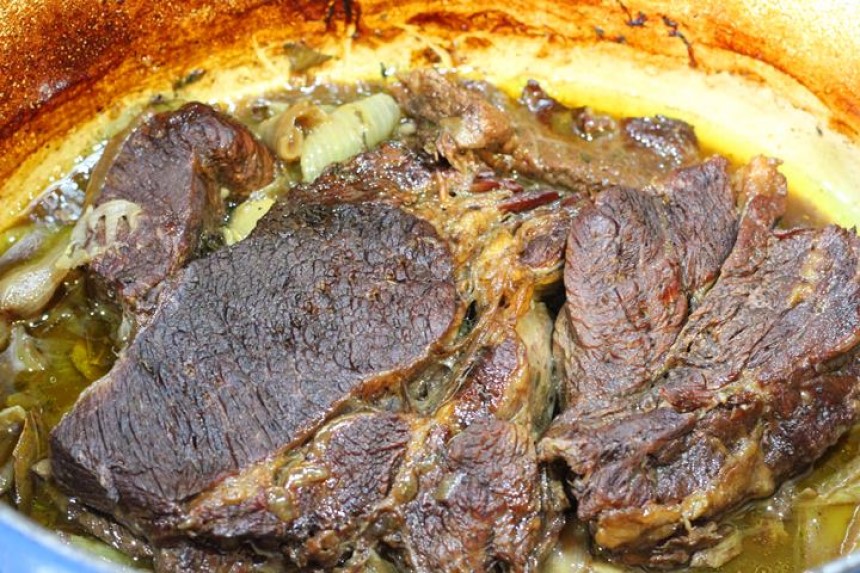
Up next is a
powdered meat tenderizer.
Trusted Source
How Does Meat Tenderizer Work? - Food Republic
Much the same way enzymes in the human body help you digest food, tenderizing powder acts enzymatically to break down the rubber-like elastic fibers that make less tender cuts of meat hard to swallow. These elastic fibers, which hold the strands of muscle tissue in meat together, are made up a protein called collagen — the same protein from which gelatin is derived from. Papain — found in papaya — and bromelain, found in pineapple — are two common anti-collagen enzymes used in many of the tenderizing powders you can buy in the grocery store.
www.foodrepublic.com
The tenderizing powder is a popular meat tenderizing tool that can tenderize steaks and other cuts of meat very quickly and very well. Meat tenderizing powder uses chemistry to break down protein fibers in the meat so that the result is a soft, buttery bite of steak. You use tenderizing powder right before you cook the steak. Gently dampen the surface of the steak or meat with some water, and then sprinkle the tenderizing powder on in an even layer over the meat. The golden ratio is 1 tsp of tenderizing powder for 1 lb of meat. Then, you season the meat as you normally would and cook it. By the time the meat comes off the heat, it has been cooked and tenderized to perfection. Many people feel like tenderizing powder is too good to be true, but it is simply science. It is a great way to efficiently tenderize your meat on a time crunch, so you do not have to wait for a marinade or a wet brine to take effect.
The next type of meat tenderizing technique is called pounding. Pounding is fairly self-explanatory. There are specific hammers and mallets designed with small triangular spikes on the ends of the mallet. To tenderize the meat, you simply take the mallet and gently but powerfully hit the meat over and over again. You will begin to see small indentations appear on the surface of the meat, which is an indication that the meat is getting tenderized. This is a physical way to break down the protein fibers and soften them up.
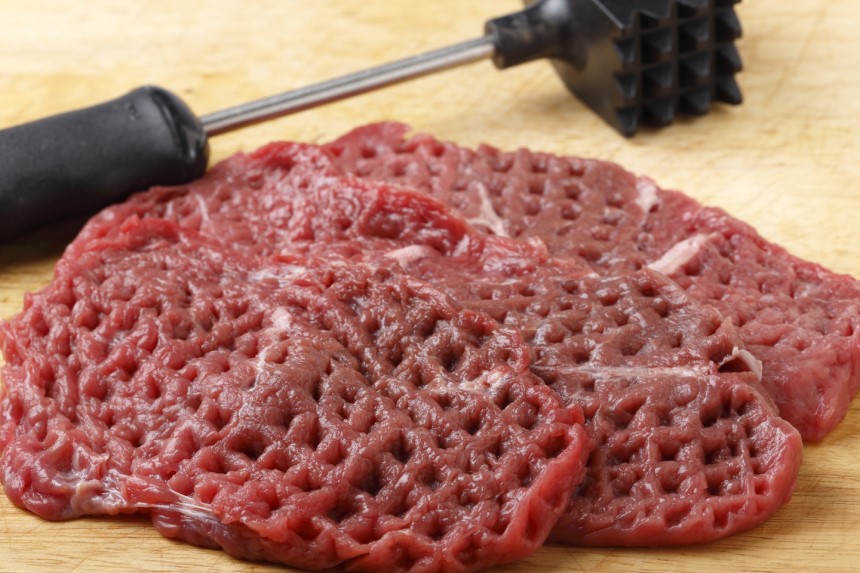
Poking is another tenderizing technique that involves puncturing the surface of the steak. To use a poke tenderizer on a steak, you take a fork or a poke tenderizer and stab the meat repeatedly. The tines of the fork will go into the meat breaking up the fibers manually. Poking tenderizers are tools that you can buy at kitchen supply stores to help you tenderize your meat. These tools have several sharp metal skewers poking out of a handle. You take the tool and stab the skewers repeatedly into the meat to loosen up the fibers and break down the protein.
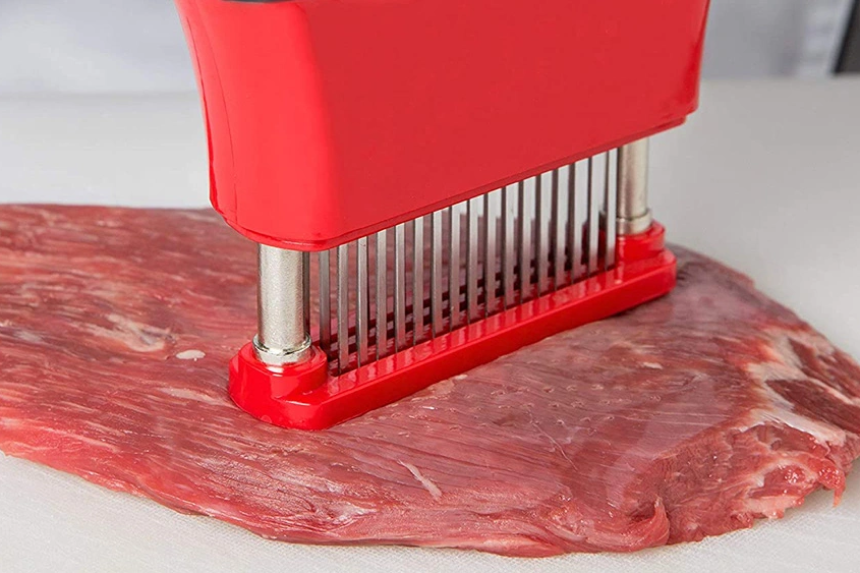
The last method of tenderizing steak we have for you is salting or dry brining. Salting and dry brining are the same thing and are the method of covering the meat in salt and letting it sit. While this may seem like a weird way to tenderize meat, it works very well.
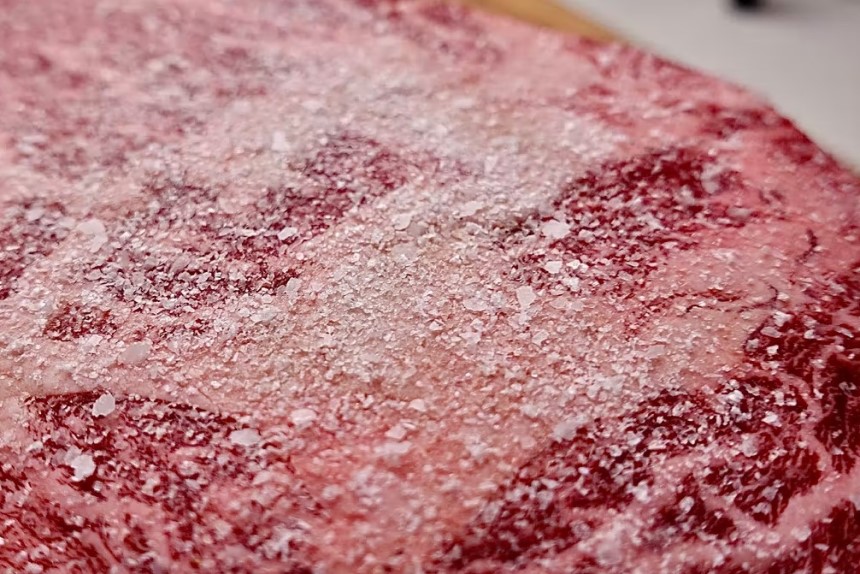
Overall, there are many different methods of meat tenderizing to choose from. What works for you and your steak will depend on what you are planning on making with it. As you can see from the list of tenderizing options above, there is a different type of tenderizing for each job. For a standard tenderizing method, a powder is a great option. To thin out a thicker or inconsistent piece of steak, you may want to try the pounding method or the poking method. If you have time on your hands and want to infuse the flavors of your marinade or sauces into your steak, then try marinating or wet brining. Regardless of which method you try first, any one of these methods from our list is one of the best ways to tenderize steak. Now that your question about how to tenderize steak has been answered, we hope that you enjoy your steak cooking journey and find the method that’s right for you!

